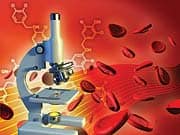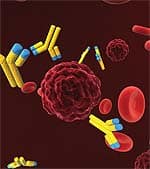Life Extension Magazine®
Scientists have discovered a test that can revolutionize the way doctors evaluate and treat a cancer patient. This technology involves the detection and genetic assay of circulating tumor cells in the bloodstream. These circulating tumor cells are the metastatic seeds that can break away from the primary site of cancer, and spread to other parts of the body. Understanding circulating tumor cells is critically important, since it is the spread of cancer to other parts of the body—and not the primary cancer—that is often responsible for the death of a person with cancer. Up until now, medical science has been focused on the primary tumor, basing treatment decisions on the specific characteristics of the primary cancer cells. However, circulating tumor cells can be genetically different from the primary cancer. Treatments designed to attack the primary tumor could fail to destroy the circulating tumor cells. Here, we’ll examine circulating tumor cell assays and the great potential this technology offers to advance the medical approach to cancer. The basic circulating tumor cell (CTC) assays you’ll learn about in this article are available in the United States and provide important data as it relates to how an individual’s cancer is treated. The Cleveland Clinic has recognized this CTC test as the top medical innovation for the year 2009. A more advanced version of the CTC test is available by sending one’s blood to Germany, where a genetic analysis is performed to identify the expression of therapeutic targets and chemo-resistance markers unique to an individual’s circulating tumor cells. That test will be described in the second article, but read this article first so you understand the powerful prognostic value of circulating tumor cell (CTC) blood testing. Moving From the Present to the FutureThe conventional approach to cancer has been to focus on the primary tumor. For example, with breast cancer the emphasis has been to examine the breast tumor for specific markers, such as estrogen receptor status and HER2 status. Treatment decisions are then made based on the presence or absence of these markers in the primary tumor. However, this approach may be misguided as research has demonstrated that circulating tumor cells (CTC) can be genetically different from the cancer cells in the primary tumor. One example is a study1 in which 37% of breast cancer patients had CTC that were positive for HER2, even though their primary breast tumor was negative for HER2! Another study provided similar findings.2 This research suggests that directing treatment towards the cancer cells of the primary tumor can, in some cases, be “barking up the wrong tree.” For this reason, focusing on the metastatic cancer cells could lead to better results. CTC testing provides us with the means with which we can now focus our attention on these potential metastatic cancer cells. Improving Prognostic Accuracy with Circulating Tumor CellsA crucial step in evaluating a cancer patient relies on establishing an accurate prognosis, which provides a prediction of the probable course and outcome of the disease. With a correct prognosis in hand, doctors can then design the most appropriate treatment for a person’s cancer.
Currently, the ability to provide an accurate prognosis is far from perfect. To investigate if circulating tumor cell (CTC) testing can improve prognostic accuracy, German scientists studied 35 women with non-metastatic breast cancer who had their levels of CTC measured before they had received any treatment for their cancer.2 Of these patients, 17 tested positive for CTC, while 18 tested negative for CTC. When the researchers looked at the prognoses of the two groups they found striking differences. The group that tested negative for CTC had a median overall survival of 125 months. The group with 5 or more CTC present in their blood had a median overall survival of only 61 months! The difference in survival of over 5 years between the two groups reveals the great importance that the presence and number of CTC had on the prognoses of this group of women with breast cancer. The findings of this study can have huge implications in how treatment is tailored for the individual with breast cancer. A key issue in breast cancer treatment is distinguishing at the outset which women have cancers that are low risk that do not require intensive treatment, and which women have a high risk of metastasis that requires aggressive treatment. This study provides a glimpse into the potential of CTC testing to provide a more accurate prognosis to allow doctors to distinguish high-risk from low-risk breast cancer patients. In a related study, researchers at the University of Texas M. D. Anderson Cancer Center measured CTC in 151 women with metastatic breast cancer.3 These patients were also evaluated for other prognostic cancer markers, such as hormone receptor status, CA 27.29 (a blood marker that helps to measure the degree of breast cancer metastatic activity), and HER2 status. Those who had 5 or more circulating tumor cells (CTC) had a median overall survival of 13½ months. The median overall survival for those with less than 5 CTC was over 29 months. The researchers also discovered that the presence of 5 or more CTC had the highest predictive value compared to all other tumor markers! The researchers went on to boldly state that “circulating tumor cells have superior and independent prognostic value…” Furthermore, recent research indicates that CTC evaluation can be used to predict prognosis for men with prostate cancer. Researchers at Thomas Jefferson University compared the levels of CTC in 37 men with metastatic prostate cancer. Their findings were remarkable—for the men with 5 or more CTC, the median overall survival was only 8.4 months. For those men with less than 5 CTC the median overall survival was 48 months!4 Yet another study measured CTC in 55 men with a rising PSA after surgery for prostate cancer.5 A rising PSA after surgery is strongly predictive of prostate cancer recurrence.6 Radiation therapy was administered to 15 patients. Of these prostate cancer patients, 60% who were CTC positive had progression of their disease during radiation therapy, while there were no disease progressions in the CTC negative group!5 Additional studies have confirmed these results.7-8 Predicting Who Will Benefit from Prostate Cancer SurgeryA central issue that men with prostate cancer, and their doctors, face is deciding if surgery (or other therapy) to eradicate the prostate is the best course of action. Surgery is most indicated when there is a strong likelihood that it will be curative. This is generally the case when the cancer is confined to the prostate gland. Potential surgical failure can occur when the cancer has spread beyond the prostate gland. In this situation, surgery is not likely to cure the disease and many doctors will not recommend surgery.
Unfortunately, the surgeon often does not know the extent of the cancer before surgery is performed. However, in a landmark study, scientists at Columbia University in New York have discovered that CTC testing can predict which men with prostate cancer are likely to benefit from surgery.9 In this study, 138 men with prostate cancer scheduled for surgery to remove the prostate were tested for the presence of CTC in their blood. An eye-opening finding revealed that the men who were CTC positive were 12 times more likely to experience a potential surgical failure compared to those who were CTC negative. Moreover, the scientists determined that CTC status was superior to PSA levels and Gleason score at predicting potential surgical failure. In fact, every single person who was CTC positive with a PSA greater than 10 ng/mL had potential surgical failure. This compares to 76% of patients who were surgically cured with a PSA greater than 10 and who were CTC negative! All in all, CTC negative patients had an 87% chance for a surgical cure. The authors remarked that “this assay might be a useful criterion in the counseling…of patients on the value of surgical treatment for prostate cancer.”
Circulating Tumor Cells Superior to Imaging TestsResearchers have also discovered that CTC evaluation may be more accurate than standard imaging tests at predicting the prognoses of metastatic breast cancer patients. Traditionally, imaging tests have been used to evaluate the effectiveness of treatment in those with metastatic breast cancer. The response to treatment is often determined by measuring changes in tumor size with CT and MRI scans. In a groundbreaking study performed in 2006, metastatic breast cancer patients had imaging tests done before and 10 weeks after they began therapy.10 The results of the imaging tests were reviewed by two independent radiologists. CTC were measured 4 weeks after the start of therapy. The researcher’s findings were astonishing—the group that responded to treatment based on imaging tests (i.e., the tumors got smaller) and had 5 or more CTC had a worse prognosis than the group with CTC counts less than 5 that showed worsening of their disease on imaging studies! These findings suggest that the levels of CTC were far more important at predicting survival compared to the actual visual changes noted on imaging tests. Further analysis established that CTC testing had superior reproducibility compared to imaging studies. There was a 15% disagreement in the interpretation of the imaging tests between the two radiologists, compared to less than 1% variation in the results of CTC testing. The authors of this study declared that “this advantage in reproducibility implies that inaccurate disease status evaluations and inappropriate treatment decisions are less likely with the use of the CTC assay than with radiographic studies.” They went on to enthusiastically conclude that “the assessment of CTCs has several advantages over serial radiographic evaluation. The CTC assay is more reproducible than radiographic evaluation, shows useful results at an earlier time point than do radiologic studies, and seems to be a more robust predictor of survival than is radiographic response.” | |||||
Circulating Tumor Cells Predict Treatment EffectivenessOne of the most exciting potential uses of CTC technology is to allow doctors to evaluate treatment effectiveness during the early phase of therapy. Historically, cancer treatment decisions have been based on the results of large studies comparing the effectiveness of different treatment regimens. These studies have shown which treatments are statistically likely to produce the best results for a large number of people. However, these treatment guidelines do not predict how an individual person with cancer will respond to a given treatment. For many cancer patients, the course of the disease, and the response to treatment, can be highly unpredictable. One person might have an excellent response to a given chemotherapy regimen, while for another person the same regimen might not have any effect at all. For this reason, it is extremely important to have the ability to quickly evaluate a person’s response to treatment. Ideally, doctors would obtain this information during the early course of therapy. If the cancer is not responding to treatment then appropriate treatment changes can be made. Another very important consideration is the significant toxicity that is associated with cancer treatment. If it can be determined that a treatment is ineffective during the early stage of therapy, then the treatment can be discontinued before it can cause severe toxicity. Up until now, doctors have often had to wait at least a few months before they can assess the effectiveness of treatment. This inability to evaluate a treatment’s efficacy during the early phase of therapy can have disastrous consequences for the person with cancer. Those three months of waiting to know if the treatment is working can make the difference between altering therapy to reflect the lack of response, or continuing with an ineffective treatment and allowing the cancer to progress. This waiting may become a thing of the past, as recent studies have demonstrated that CTC testing can reliably predict the response to treatment during the early phase of therapy. In an important study,11 163 women with metastatic breast cancer were tested for CTC at baseline and at four different times during the course of treatment. The researchers discovered that those patients with less than 5 CTC at the first measurement had a median overall survival of greater than 18.5 months. Those with 5 or more CTC had a median overall survival of only 7 months. As early as 4 weeks into therapy, CTC testing determined which patients were not responding and whose cancer would continue to progress with ineffective treatment. The authors of this study concluded that “detection of elevated CTC at any time during therapy is an accurate indication of subsequent rapid disease progression and mortality for metastatic breast cancer patients.” In a related study,10 138 women with metastatic breast cancer had CTC measured 4 weeks after the start of therapy. The median overall survival for those with 5 or more CTC was 8.5 months. Those with a CTC count less than 5 had a substantially greater median overall survival time of 22.6 months! Also, 84% of those with a CTC count less than 5 were alive after one year, compared to only 38% for those with a CTC count of 5 or more. The findings of these studies illustrate the tremendous potential of CTC testing to accurately predict the effectiveness of treatment during the early stage of therapy. Circulating Tumor Cells Predict Risk of RelapseOne of the most important questions a person has after they receive treatment for their breast cancer is, “What is the likelihood that I will have a relapse?” Although statistical predictions for relapse can be made for large groups of people, this is a question that doctors are not able to answer with great accuracy for the individual woman with breast cancer.
However, a growing number of studies have revealed that CTC testing can accurately predict the likelihood of recurrence in breast cancer patients after they receive treatment. In 2006, scientists in Spain measured the presence of CTC in 84 high-risk breast cancer patients after they received initial chemotherapy.12 The researchers found dramatic differences in the relapse rates between those who tested positive for CTC, as compared to those that did not have any CTC detected in their blood. The group testing positive for CTC had a 269% increased risk of relapse, and a 300% increased risk of death, compared to the group testing negative for CTC! Further analysis showed a striking 53 month difference in the time to relapse between the groups. In a related study,13 German scientists in 2008 studied 25 women with breast cancer that had not metastasized. They measured CTC levels before and after the patients received chemotherapy. The results showed that relapse occurred in less than 10% of patients whose CTC levels indicated a decline, no change, or minor increase when compared to baseline CTC levels. There was a substantially higher relapse rate of 40% in the group with a CTC increase at the end of therapy. The same German scientists then completed a study of 91 non-metastatic breast cancer patients receiving chemotherapy.14 Measurements of CTC were taken before, during, and after the completion of chemotherapy. After a follow-up period of 40 months, 20 of the women had experienced a relapse. The investigators determined that the group with a greater than 10-fold decrease in CTC after treatment had a relapse rate of only 3.6%! The group that experienced a greater than 10-fold increase in CTC after treatment experienced an alarming relapse rate of 42.4%. The results of this study can have far-reaching implications for breast cancer patients in the future, as those with a greater than 10-fold increase in CTC after therapy are at much higher risk of relapse and might be candidates for more aggressive treatment. These researchers concluded that “… circulating tumor cells are influenced by systemic chemotherapy and that an increase… of 10-fold or more at the end of therapy is a strong predictor of relapse and a surrogate marker for the aggressiveness of the tumor cells.” SummaryA number of studies have demonstrated the impressive ability of CTC testing to provide essential information for cancer patients at various stages during their evaluation and treatment. CTC testing can improve prognostic accuracy, predict risk of relapse after treatment, and allow doctors to monitor treatment effectiveness in real time. As we look into the future of cancer assessment and treatment, it’s easy to see how CTC testing will allow us to move beyond the traditional focus on the primary tumor. Major advances can occur as medical science focuses on CTC and targets treatments against the specific characteristics of these cells. Fortunately, the person dealing with cancer does not have to wait for the future, as CTC testing is available now for those who want to take advantage of this new technology and benefit from the vital information this testing provides. To inquire about laboratories that offer circulating tumor cell (CTC) assay blood tests in the United States, call 1-800-208-3444. (Information about the more advanced CTC/molecular analysis tests available in Germany appears in the next article.) If you have any questions on the scientific content of this article, please call a Life Extension® Health Advisor at 1-866-864-3027. | ||
| References | ||
| 1. Meng S, Tripathy D, Shete S, et al. HER-2 gene amplification can be acquired as breast cancer progresses. Proc Natl Acad Sci USA. 2004 Jun 22;101(25):9393-8. 2. Wülfing P, Borchard J, Buerger H, et al. HER2-positive circulating tumor cells indicate poor clinical outcome in stage I to III breast cancer patients. Clin Cancer Res. 2006 Mar 15;12(6):1715-20. 3. Cristofanilli M, Broglio KR, Guarneri V, et al. Circulating tumor cells in metastatic breast cancer: biologic staging beyond tumor burden. Clin Breast Cancer. 2007 Feb;7(6):471-9. 4. Moreno JG, Miller MC, Gross S, et al. Circulating tumor cells predict survival in patients with metastatic prostate cancer. Urology. 2005 Apr;65(4):713-8. 5. Tombal B, Van Cangh PJ, Loric S, et al. Prognostic value of circulating prostate cells in patients with a rising PSA after radical prostatectomy. Prostate. 2003 Aug 1;56(3):163-70. 6. Pound CR, Partin AW, Eisenberger MA, et al. Natural history of progression after PSA elevation following radical prostatectomy. JAMA. 1999;281:1591-7. 7. Halabi S, Small EJ, Hayes DF, et al. Prognostic significance of reverse transcriptase polymerase chain reaction for prostate-specific antigen in metastatic prostate cancer: a nested study within CALGB 9583. J Clin Oncol. 2003 Feb 1;21(3):490-5. 8. Danila DC, Heller G, Gignac GA, et al. Circulating tumor cell number and prognosis in progressive castration-resistant prostate cancer. Clin Cancer Res. 2007 Dec 1;13(23):7053-8. 9. Olsson CA, De Vries GM, Benson MC, et al. The use of RT-PCR for prostate-specific antigen assay to predict potential surgical failures before radical prostatectomy: molecular staging of prostate cancer. Br J Urol. 1996 Mar;77(3):411-7. 10. Budd GT, Cristofanilli M, Ellis MJ, et al. Circulating tumor cells versus imaging--predicting overall survival in metastatic breast cancer. Clin Cancer Res. 2006 Nov 1;12(21):6403-9. 11. Hayes DF, Cristofanilli M, Budd GT, et al. Circulating tumor cells at each follow-up time point during therapy of metastatic breast cancer patients predict progression-free and overall survival. Clin Cancer Res. 2006 Jul 15;12(14 Pt 1):4218-24. 12. Quintela-Fandino M, Lopez JM, Hitt R, et al. Breast cancer-specific mRNA transcripts presence in peripheral blood after adjuvant chemotherapy predicts poor survival among high-risk breast cancer patients treated with high-dose chemotherapy with peripheral blood stem cell support. J Clin Oncol. 2006 Aug 1;24(22):3611-8. 13. Pachmann K, Dengler R, Lobodasch K, et al. An increase in cell number at completion of therapy may develop as an indicator of early relapse : Quantification of circulating epithelial tumor cells (CETC) for monitoring of adjuvant therapy in breast cancer. J Cancer Res Clin Oncol. 2008 Jan;134(1):59-65. 14. Pachmann K, Camara O, Kavallaris A, et al. Monitoring the response of circulating epithelial tumor cells to adjuvant chemotherapy in breast cancer allows detection of patients at risk of early relapse. J Clin Oncol. 2008 Mar 10;26(8):1208-15. |





